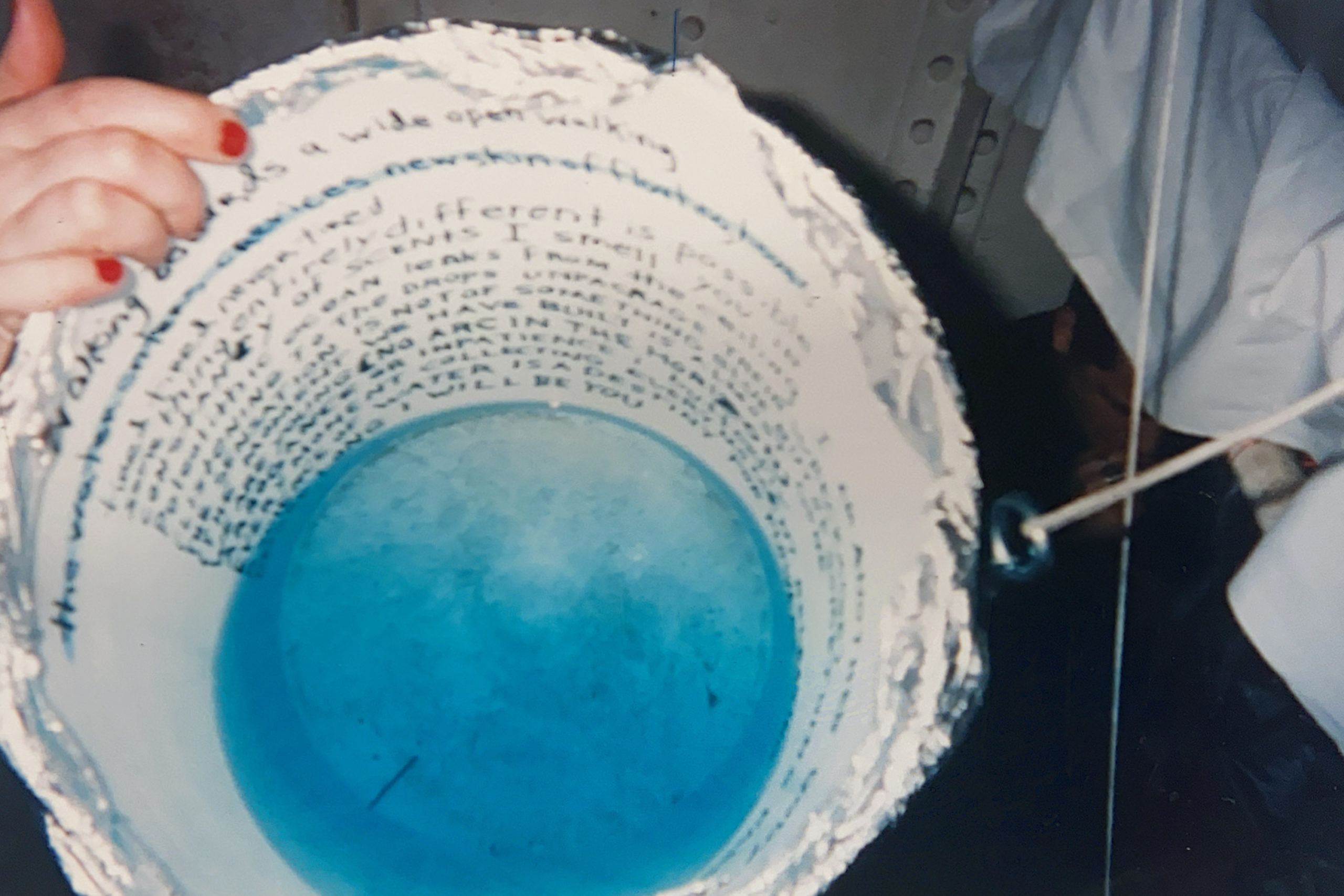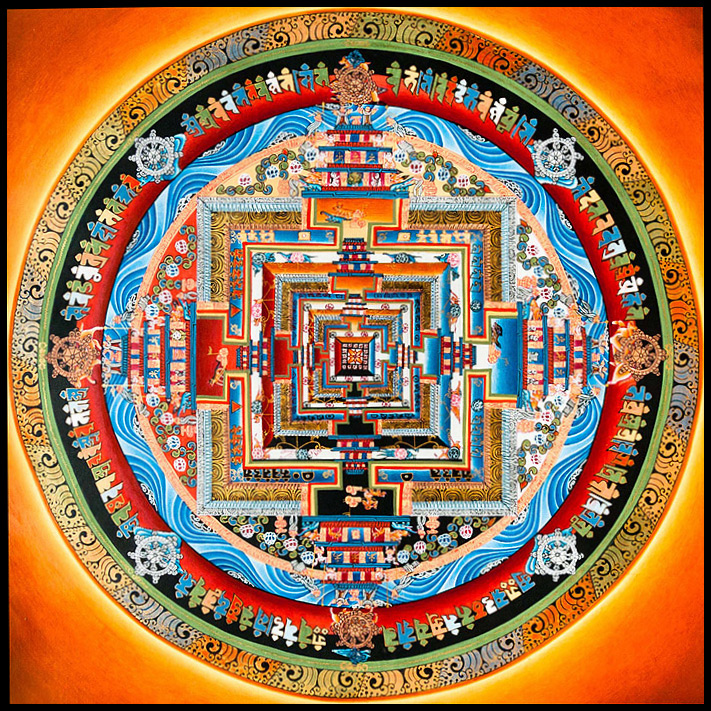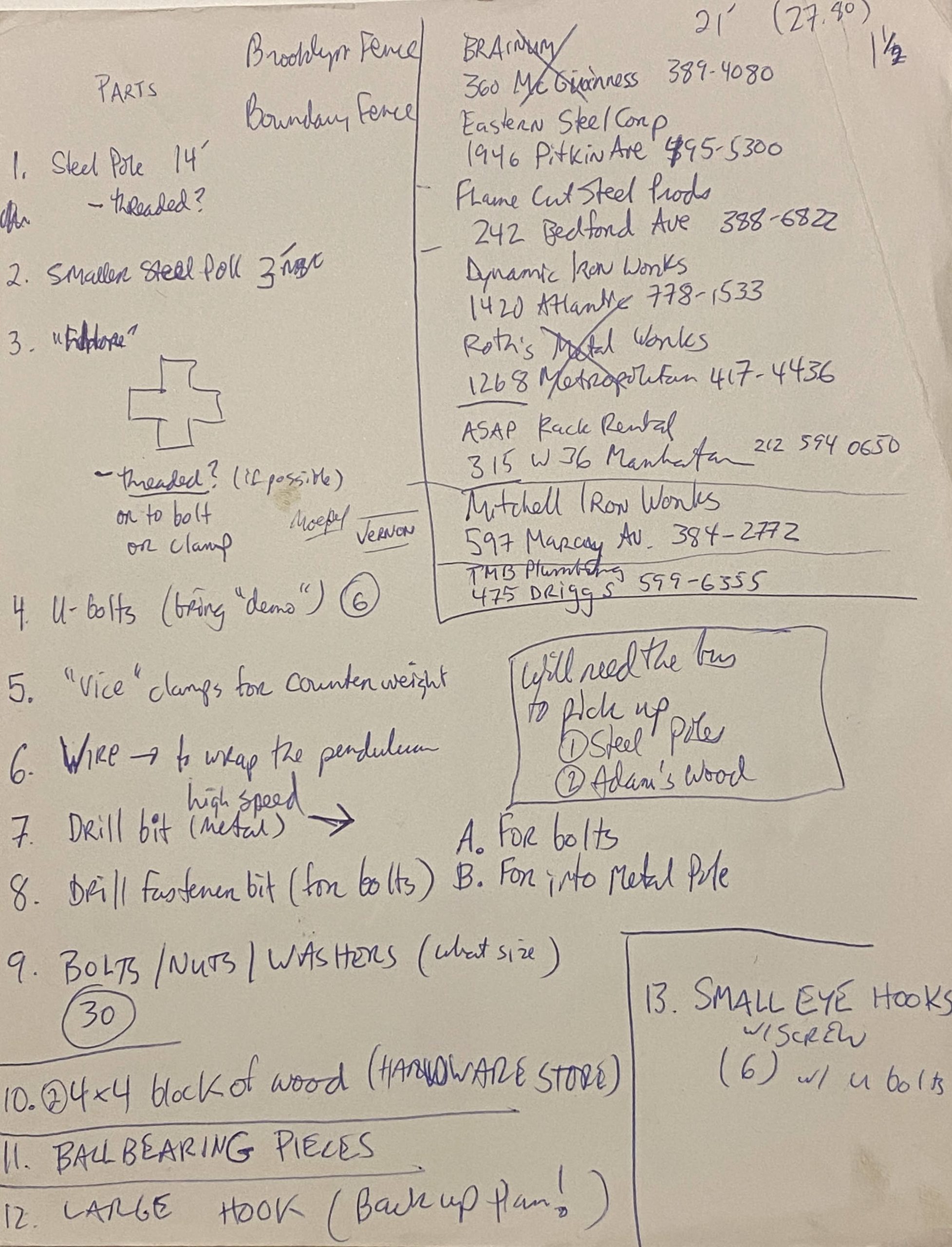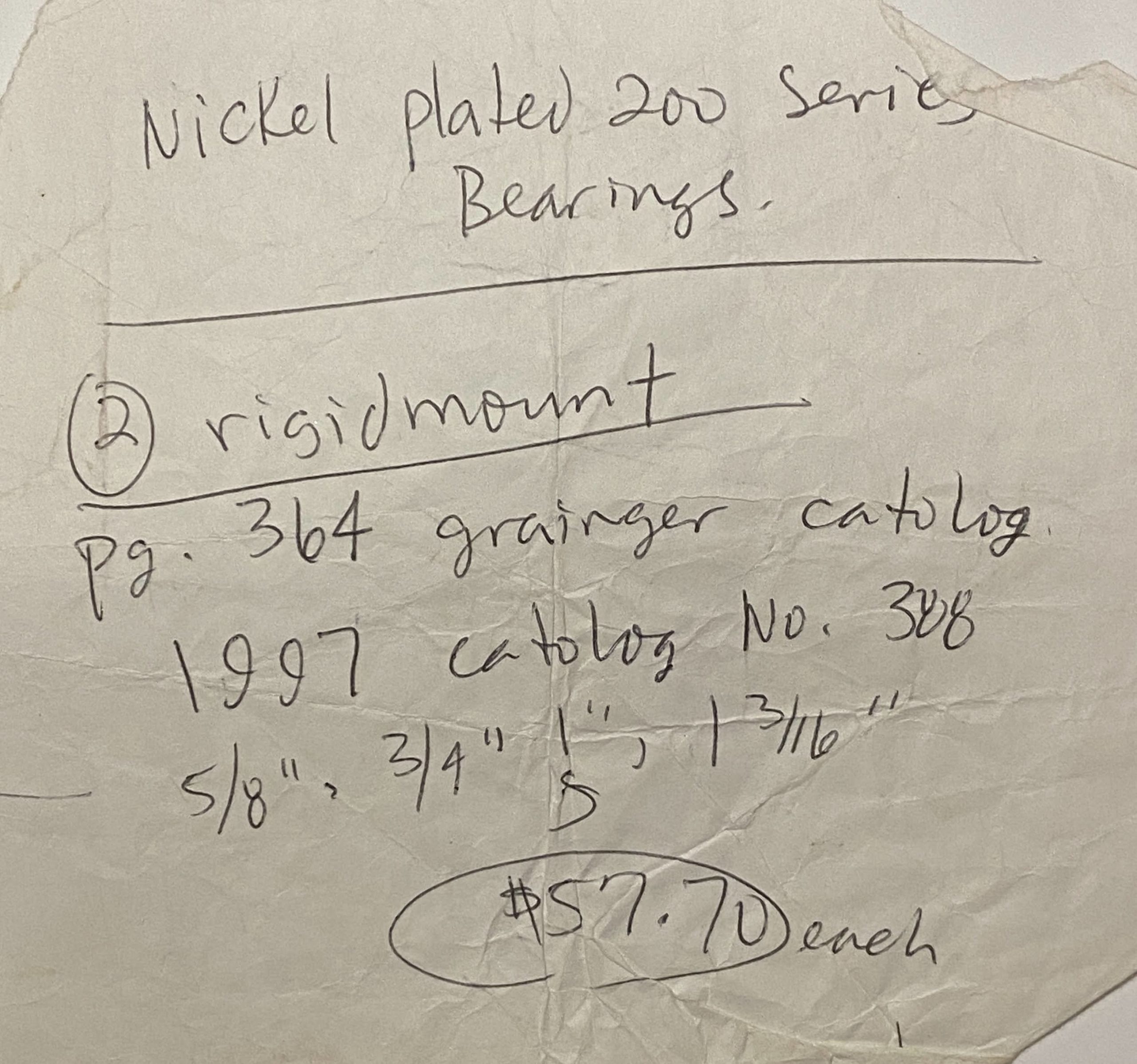Broken Clocks: Project Time

SUMMARY: Broken Clocks: PROJECT TIME. A series of installations, actions and meditations that explore the thresholds of our industrial clock time and other modes of experience available to us. ***Very limited documentation***
“Time is the substance from which I am made.
Time is a river which carries me along, but I am the river;
It is a tiger that devours me, but I am the tiger;
It is a fire that consumes me, but I am the fire.”
–Jorge Luis Borges
Backstory & Forward Story: The nearing of the millenium and anxiety surrounding Y2K brought for me a heightened awareness of time and our dependence on technology as a means of survival.
I began to research the forces that shaped our current linear sensibility of time: Our calendar, the solar year, the origins of the clock with its 60 seconds, 60 minutes, 24 hours and so forth. I also developed a fascination for other historical clocks, other means of tracking the flow of the day and night. Our linear time is greatly wedded to our industrial economy. We become servants of an abstract, adapting our bodies to it, rather than supporting harmony with the more universal flow of day and night, season and harvest. The costs of this shift on our consciousness, community and planet is high. The clock comes to dominate our interactions rather than reflect our experience of our inner and outer environment. “Freedom from”–or even mere respites from– the primacy of this kind of clock and its linear push of progress, opens other avenues of being in the world. Time as an experience, an ocean we swim in, rather than a quantifier or box we try to fit our experience into.
Out of these reflections, I initiated two series: First, ritual destructions and performances that channeled the anxieties and frustrations of our industrial/technological era and the kind of time environment it relies upon (documented in performances); Second, a series of broken clocks and creative time projects and visions which are documented as works or visions below. (Note: The sun dial will be documented in the future with Sunning meditations and practices.)
These studies continued in the years that followed, especially through meditation practice, long retreats, encounters with non-industrial societies and inner paths based on radically different relationships with time including the “Taoist Circadian Clock,” LA massage of traditional Tibetan Medicine and simply living according to lunar cycles while living in a remote forest. Anthony Aveni’s book Empires of Time is a rich resource as is the great work Poetics of Space by Gaston Bachelard. I’ve included in “Desert Clock Garden” (a work in progress) a couple poems from meditation glimpses along that journey. I’ve also made an entry for the Kalachakra Tantra, aka The Wheel of Time, the most hyperbolic expression of time I’ve encountered. The Kalachakra Tantra, for me, is Einstein meets Buddha inside Cafe “Universe in a grain of sand.”
Broken Water Clock: First installed inside the mate’s cabin on The Frying Pan Lighthouse ship docked at Pier 23 in Chelsea, NYC as part of a 40-artist event, April 1999. During my research into TIME, I discovered water clocks, one of the oldest forms of keeping time and embarked on creating a version steeped in poetics. The raw materials: Two large 5 gallon buckets coated in aluminum foil on the outside, each inscribed with one voice of a “two voice” poem (Broken Water Clock) on the inside. One bucket suspended four feet off the ground, directly above the other bucket. The top bucket had a small hole drilled in its bottom temporarily plugged with a nail. This bucket was filled with water. When the nail was removed, the top bucket slowly dripped water into the lower. A small ladder enabled views into the upper bucket. As the top bucket emptied, the lower bucket filled and the time could be read by the combination of lines at the water’s edge. When the pressure in the top bucket was too low to force water through the small hole, time stopped. The clock broke.
12’ Broken Pendulum: Project Time, with assistance from Derrick David aka Bunny, originally conceived and designed for the two-day Ransom Corp July 4th Festival, 1999 on the Frying Pan. This project could not be installed due to a last minute conflict between the venue and the Fire Department. One of my all time favorites despite its cancellation, this project involved a Sherlock Holmes level of detective work and multiple physics challenges. I visited half a dozen machine shops in East Williamsburg asking strange questions about ball bearings. The first design anchored the support structure into the ceiling. The second design, which we ultimately built, was free standing so it could be installed on the marine dock of the event space. The piece had three basic components: the support structure, the swinging pivot beams and the pendulum ball. The pendulum support structure involved two identical A-frame “towers” rising 12′ built using 4″ x 4″ beams and 2 x 4 braces. These were each topped by a specially adapted steel piece designed to secure a 2” diameter metal pole while letting it rotate on a ring of ball bearings. The swinging pivot piece had one horizontal (to the ground) 2″ diameter and 3′ wide steel beam that inserted into both of these ball bearing contraptions. In the direct center of this 3′ beam, we connected a 8′ beam that hung towards the ground. To this beam, we anchored the ball. Bunny, prop-man extraordinaire, cast the 40 lb clay pendulum weight, a 2′ oval, plaster of paris with protruding steel O-ring for connecting to the steel swing. The pendulum structure looked like a mini abandoned oil derrick. No matter how much friction we removed from the system, it would certainly “break.” But could we establish a swing that would last long enough to keep time at all? In the end, we built, tested and disassembled it on my parents’ upstate driveway. Then my old man kept a stack of 4 x 4s, 4 x 6s, 2 x 4s, steel polls and the swing weight in his upstate garage for near a decade as I traveled west and to the far east. I still have a box of heavy bolts.

How to Build a The Clock Room
A lucid dream Installation Time Ecology
How do different time devices affect how we experience ourselves and our world?
Lead an audience through rooms of historical and hyperbolic clocks into The Clock Room…
The Individual Rooms. Rig a single historical clock in a series of rooms from stick bushels and water clocks to hour glasses, sundials, pendulums, stop watches, grandfather spring powered clocks, wind up watches, atomic clocks, etc. Follow these with “irregular” time: Devices that go fast then slow, that stop then start. Small gadgets with hidden interiors. Immersive video of an ice river. These, at last, open into:
The Clock Room. Rig an immense industrial space with all the tools of immersive theater and museums so it can express various kinds of environmental and psychological time: Lighting systems, projections, fans, smells, surround sound, pavlovian devices such as flashing lights, pin pricks, a massaging frequency in a chair, heating and air conditioners, humidifiers and dehumidifiers. Accompany these with live performances.
Choreograph a clock theater. For instance, lights grow brighter, then darker then brighter as synchronized fans blow harder, softer then harder. Video images play. Flowers bloom, close, bloom. People exit and enter.
A clock with “normal” time has consistent gradations of change . A “jagged” clock would never settle on a pattern.
In this theater, people become aware of time as creative experience and an abstraction as well as deeply biologically conditioned through massive adaptive forces. What clock has what effect?
The Clock Room is a place to solely explore these elements and it can be a setting for performances, installations, lectures, tea time, meditation, cosplay, etc. Artists, scientists, educators develop unique experiments.
ENTRANCE: DECOMPRESS, a three sided decompression chamber, constructed with Jonathan Gabel and videographer Shige Moriya, Frying Pan, Summer 2000. Hosting events at the Frying Pan created wonderful opportunities to experiment with thresholds. Walking down a long pier towards the river and a ship, leaving one realm to enter another. One event, we had a pirate, a witch and a business man at the door requesting that all timekeeping devices be removed and had timekeeping “police” on the inside. This three-sided chamber way station, was a large piece born to create a pause, to slow attendees, to amplify the sense of making a passage from “inside Manhattan” to “outside it” just off its far western periphery. Jonathan helped me construct three large free-standing rectangular projection scrims using 2″ x 1″ x 12′ wood pieces. We stapled to these white fabric to hold images. The scrims were set in a triangle with one point serving as the opening entrance with no exit apparent before you enter. Once you entered, you had the option to exit to either side apex of the triangles. In the middle, I drew a simple circle. Using two slide projectors and one video projector, Shige Moriya projected images onto the scrims. The footage, entirely shot by Shige, was of immense, pensive natural scenes: birds in intricate formations, deserts and ice flows. Some who entered passed swiftly heading into the belly of the party. Others spent time within the chamber. All exited by this same channel, creating a heightened sense of a “circular experience” where the beginning and the end coincide. *Note: NO DOCUMENTATION of this work. Video here shot by GK.
LEO: Prophetic Device aka The Poetry Fortune Teller, various events, summer/fall 1999. The Prophetic Device was a temperamental, stand alone, portable fortune telling table that offered mystic revelation to those of nimble mind. First, I constructed a 2’6”L x 2’6”W x 2’H table with collapsible legs out of scrape wood and hinges. I painted the table purple and used 12 large nails set at the 12 clock/zodiac points as pegs to hold the holed prophesy cards in place. Twelve sets of 12 Prophecies (a total of 144) were stacked facedown. For a reading, those seeking counsel would spin two clock arms pinned to the center point. The two resultant cards offered the current and future forecast. The Prophecies ranged from intricate hieroglyphs to aphorisms, poems, recipes, adventure instructions, advice on what not to do, favored positions in bed and other such important information. If you did not comprehend the prophecy, you were instructed to sleep with it under your pillow, to grind it into tiny bits and steep it in a liquid then consume it or to research it’s inner meaning. Written on the table in eloquent script were more intricate instructions for use of the prophetic device. Unfortunately, with great sadness, except for a two remaining prophetic cards pictured here, it has been entirely lost to time.
SUMMARY: Desert Clock Garden. Unfinished Work. Long deeply anchored steel stems, 1′ to 20′ in height, topped with myriad styles of clocks grow from the desert floor. Each expresses a poem that blazes in the sun and cools in the night starts and moon. Picture: Image from notebooks circa 2001.
the desert appears
No barter no debt
its endless expanse
a concourse
of ordinary miracle
___
a task: finding the expansiveness
in the small, the widening
enormity of the interior
of the moment
___
Seconds divide into smaller and smaller
moments, wispy divisions of infinity,
adding up to space, to nowhere, to no answer

from Wikipedia: The Kālacakratantra revolves around the concept of time (kāla) and cycles or wheels (chakra). Conventionally speaking, this refers to the cycles of the planets, to the cycles of human breathing and subtle energies in the body.[26] Regarding the outer or external aspect of conventional reality, the wheel of time refers to the passage of days, month, and years (as well as the cycles of the zodiac) while with regard to the individual or inner aspect, it refers to “the circulation of pranas [vital airs] within the wheel of the nadis [subtle channels] in the body,” which is linked with the 12 aspects of dependent origination and the 12 signs of the zodiac.[27] These different cycles are interconnected and correspond to each other.[28]
In the first chapter, it is stated that the world emerges from emptiness and the force of time, which is a kind of power that originates the universe: “Because of time (kalat), from the voids (sunyesu), originate wind, fire, water, the earth; the continents, mountains, and oceans; the constellations, the sun, the moon, the host of star-planets, and the sages; gods, bhutas, and nagas; animals that have four types of birthplace; humans and hell beings also, on the manifold earth and below -originate in the middle of void (sunyamadhye), like salt in water, and the egg-born in the middle of an egg.”[29]
Chakra, in turn, refers to the universe and all things in it which exist as cyclical patterns powered by time. Kāla is also said to be knowledge (jñana) and chakra is the knowable (jneya). In the universal sense then, the term Kālacakra is all-inclusive and refers to the unity of the basis of reality and reality itself.[30] According to Wallace, from the point of view of ultimate reality, “Kālacakra” refers to,
the nonduality of two facets of a single reality—namely, wisdom (prajña), or emptiness (sunyata), and method (upaya), or compassion (karuna). The word “time” refers to the gnosis of imperishable bliss (aksara-sukha-jñana), which is a method consisting of compassion; and the word “wheel” designates wisdom consisting of emptiness. Their unity is the Buddha Kālacakra.[31]
https://www.dalailama.com/teachings/kalachakra-initiations
https://kalachakranet.org/kalachakra_tantra_introduction.html
https://studybuddhism.com/en/tibetan-buddhism/tantra/kalachakra/what-is-kalachakra
https://rimebuddhism.com/about/kalachakra/













